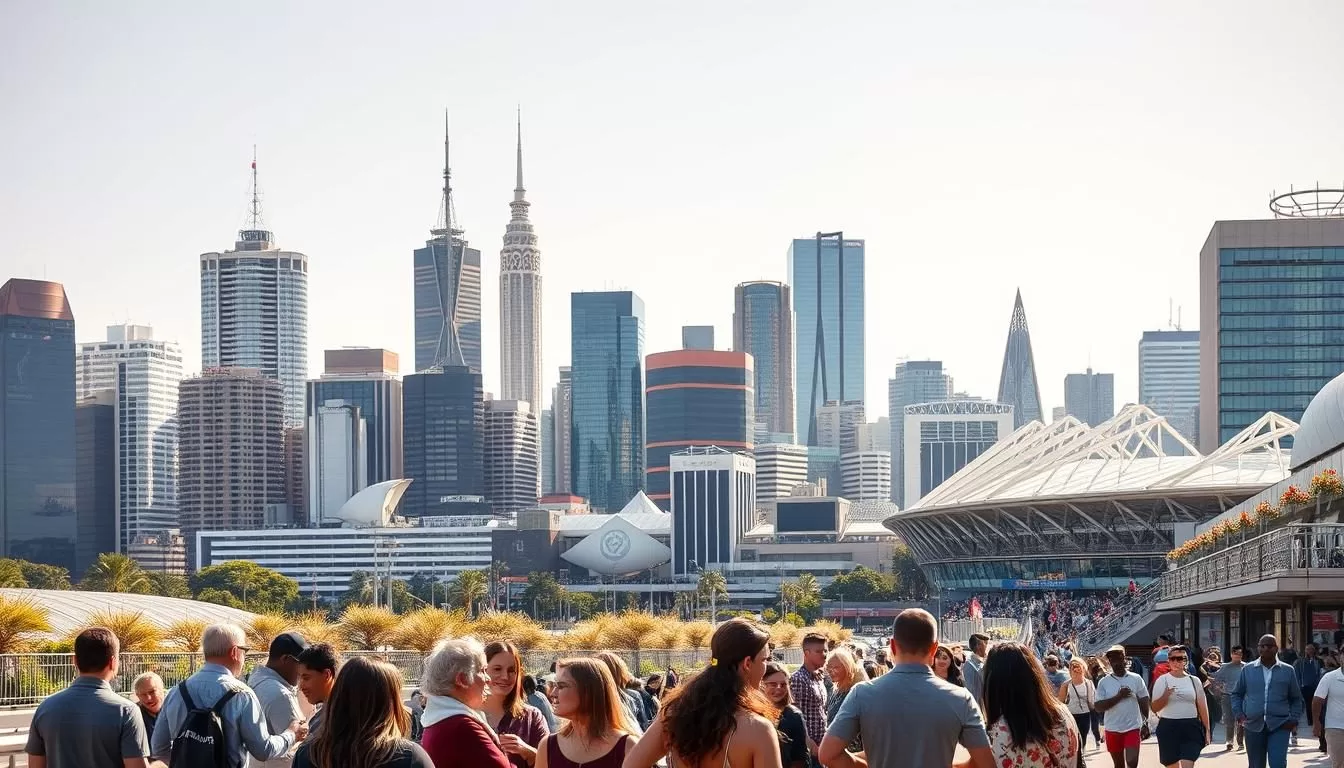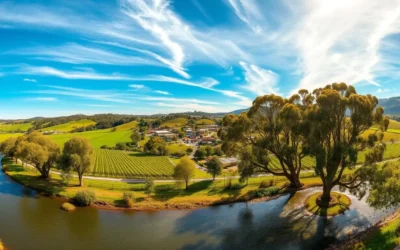✓ Accommodations ✓ Flights ✓ Rental Cars
In a vibrant and culturally rich area, the top language spoken plays a significant role in shaping daily life. This region is home to a wide array of languages, reflecting its diverse population. Over 27.6% of residents report speaking a language spoken other than English at home, showcasing its multicultural identity.
Migration patterns have greatly influenced the spoken victoria landscape. For example, Mandarin and Vietnamese are among the most common languages used in households, with significant growth in recent years. This diversity highlights the importance of clear communication and cultural integration.
Understanding the top language trends helps appreciate the region’s unique identity. Whether you’re a visitor or a resident, exploring this linguistic richness offers a deeper connection to its vibrant communities.
Overview of Linguistic Diversity in Victoria
Language diversity here tells a story of migration and cultural integration. Over the years, waves of settlers and immigrants have shaped the way people communicate. This has created a unique linguistic footprint that continues to evolve.
Historical Background and Early Influences
Early European settlers brought their languages, which blended with indigenous elements. This mix laid the foundation for the region’s linguistic identity. Immigration waves in the 20th century further enriched this diversity, adding new languages to the mix.
For example, over 290 languages and dialects are now spoken, reflecting the region’s multicultural roots. This growth highlights the importance of language retention in community settings.
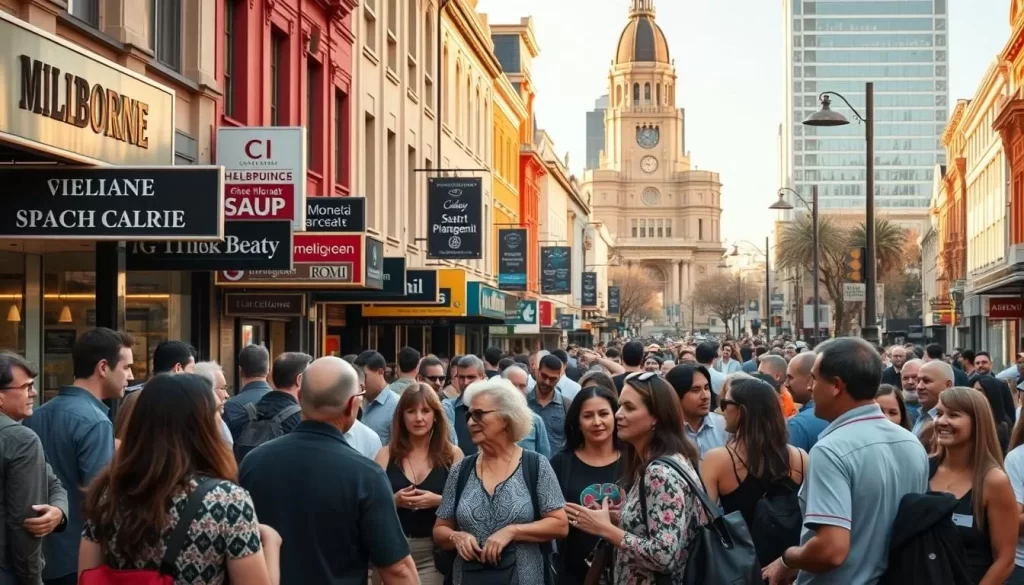
Modern Cultural Landscape
Today, the region’s population reflects a vibrant mix of cultures. Over 27% of residents speak a language other than English at home. This trend underscores the role of language in preserving cultural traditions.
Census data shows that Mandarin, Arabic, and Vietnamese are among the most common languages spoken. These numbers highlight the ongoing influence of migration on the region’s linguistic landscape.
Understanding these trends helps you appreciate the rich cultural tapestry that defines this area. Whether you’re exploring local communities or studying population data, the linguistic diversity here offers a fascinating glimpse into its history and identity.
Victoria, Australia: Official and widely spoken languages
Effective communication bridges cultures in this diverse state. Over 30% of residents speak a language spoken home other than English, reflecting its multicultural identity. This linguistic richness shapes daily interactions and fosters community connections.
English remains the official language, but other languages thrive in households and public spaces. For example, Mandarin and Vietnamese are widely used, with significant growth in recent years. This trend highlights the impact of migrant communities on the region’s linguistic landscape.
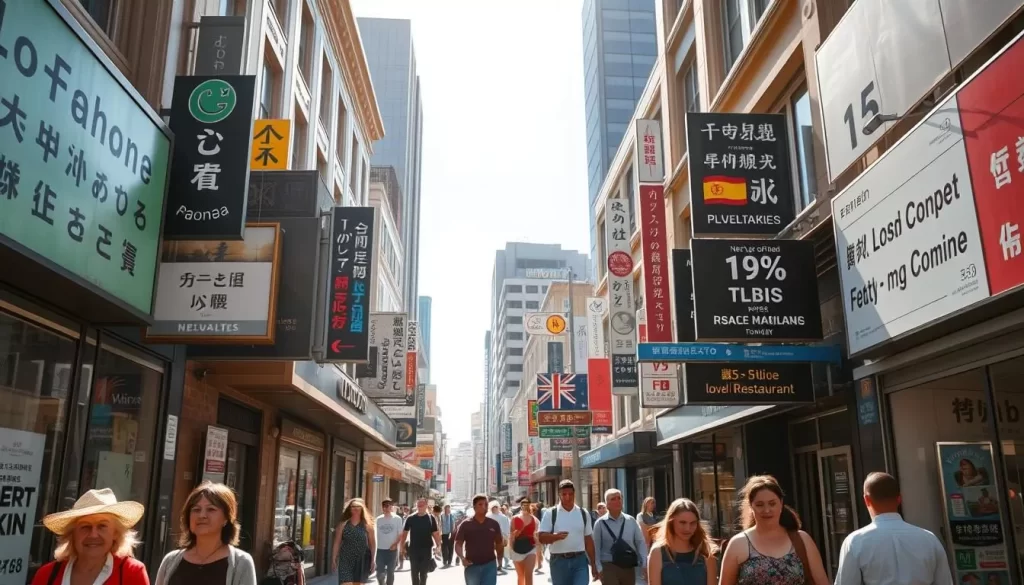
Clear communication is essential in government and daily life. It ensures everyone feels included and understood. This approach strengthens community bonds and promotes cultural integration.
Here’s a breakdown of the most common spoken home languages and their prevalence:
| Language | Percentage of Speakers |
|---|---|
| Mandarin | 3.2% |
| Italian | 1.9% |
| Greek | 1.9% |
| Vietnamese | 1.7% |
| Arabic | 1.6% |
The influence of migrant communities is evident in these numbers. For instance, the number of Mandarin speakers has doubled in the past decade. This growth underscores the importance of preserving cultural heritage through language.
In some suburbs, languages like Vietnamese and Arabic dominate. These areas showcase how spoken home languages contribute to local identity and cohesion. Understanding these trends helps you appreciate the region’s vibrant cultural tapestry.
Whether you’re exploring neighborhoods or engaging with locals, this linguistic diversity offers a unique glimpse into the state’s identity. It’s a testament to the power of communication in uniting people from different backgrounds.
Top Languages Spoken in Victorian Communities
The linguistic landscape of this region is shaped by a mix of traditional and emerging influences. Over 250 languages are in regular use, reflecting its multicultural identity. This diversity is a testament to the region’s rich history and ongoing cultural integration.
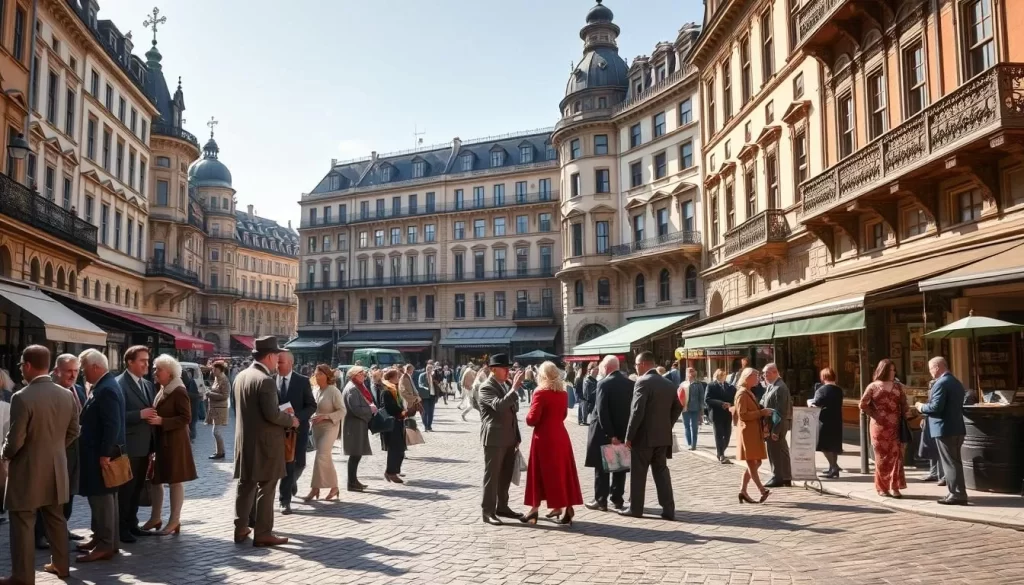
Mandarin, Vietnamese, and Greek Impacts
Mandarin, Vietnamese, and Greek have significantly influenced daily interactions. For example, Mandarin is now the second-most spoken language in inner-city areas like the CBD and Carlton. Vietnamese has also seen steady growth, particularly in suburbs like Richmond and Springvale.
Greek, once a dominant language, remains a cultural cornerstone in areas like Oakleigh. These languages highlight the historical ties of migrant communities to their heritage.
Emerging Languages like Punjabi and Hindi
Punjabi and Hindi are among the fastest-growing languages in the region. For instance, in Ouyen, Punjabi is the most spoken language other than English. Hindi, often linked to migrants from India, is gaining traction in suburban hubs.
These emerging languages reflect the region’s evolving demographic trends. They also underscore the importance of preserving cultural identity through spoken language.
“Language is the road map of a culture. It tells you where its people come from and where they are going.”
Here’s a breakdown of the top languages and their prevalence in suburban areas:
| Language | Key Suburban Hubs |
|---|---|
| Mandarin | Glen Waverley, Box Hill, Oakleigh |
| Vietnamese | Richmond, Springvale |
| Greek | Oakleigh, Clayton |
| Punjabi | Ouyen, Donald |
| Hindi | Dandenong, Cranbourne |
Understanding these trends helps you appreciate the region’s vibrant cultural tapestry. Whether you’re exploring local communities or studying population data, the linguistic diversity here offers a unique glimpse into its identity.
Geographical Distribution of Languages in Victoria
The way people communicate across different areas highlights the region’s cultural richness. Over 300 languages are in use, with 20% of residents speaking a language other than English at home. This diversity is evident in both urban centers and rural areas.
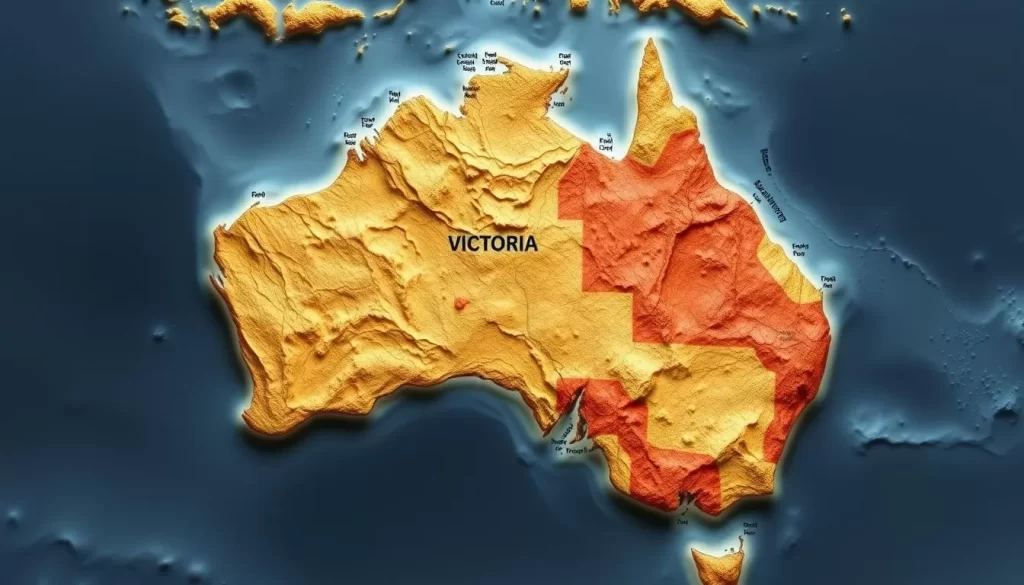
Key Suburban Language Hubs
Certain suburbs stand out for their linguistic diversity. For example, in Greater Dandenong, more than 50% of residents speak a language other than English at home. Box Hill and Richmond are known for their high concentration of Mandarin and Vietnamese speakers, respectively.
In Glen Waverley, Box Hill, and Oakleigh, Mandarin is commonly spoken, with 10-13% of residents using it at home. These areas reflect the strong influence of migrant communities on local culture.
Regional and Rural Trends
Rural areas also showcase unique language patterns. In Ouyen, Punjabi is the most spoken language other than English. Similarly, in Donald and Wycheproof, Malayalam is widely used by migrants from Kerala, India.
Indigenous languages, though less common, are still part of the linguistic fabric, with around 1,000 speakers across various communities. This highlights the importance of preserving cultural heritage.
Here’s a breakdown of key suburban and rural language hubs:
| Location | Commonly Spoken Language |
|---|---|
| Greater Dandenong | Multiple languages |
| Box Hill | Mandarin |
| Richmond | Vietnamese |
| Ouyen | Punjabi |
| Donald | Malayalam |
Translation services play a vital role in supporting these communities. They help bridge communication gaps and ensure everyone feels included. Local businesses and community centers also promote language use, fostering cultural integration.
Understanding these patterns helps you appreciate the region’s vibrant cultural tapestry. Whether you’re a visitor or a resident, this linguistic diversity offers a unique glimpse into its identity.
Census Data Insights and Language Trends
Recent census data reveals fascinating shifts in language trends across the region. Comparing 2016 and 2021 figures highlights how the immigrant population has reshaped linguistic diversity. This change reflects broader cultural shifts and the influence of neighboring areas like South Wales and New South.
In 2016, 48.2% of residents were first or second-generation migrants. By 2021, this number rose to 51.5%, showcasing the growing impact of immigrant communities. This trend has significantly altered the linguistic landscape, with languages like Punjabi seeing an 80% increase in usage.
2016 vs. 2021 Census Comparisons
The 2021 census recorded over 5.5 million people speaking a language other than English at home, up by nearly 800,000 since 2016. This growth underscores the importance of language services in fostering inclusion. For example, the rise in Punjabi speakers reflects the influence of migration from the country’s northern regions.
Here’s a comparison of key language trends between 2016 and 2021:
| Language | 2016 Speakers | 2021 Speakers |
|---|---|---|
| Punjabi | 132,000 | 239,000 |
| Mandarin | 597,000 | 685,000 |
| Arabic | 287,000 | 321,000 |
| Vietnamese | 277,000 | 301,000 |
These figures highlight the evolving culture of the region. The increase in Mandarin and Arabic speakers, for instance, reflects the growing influence of Asian and Middle Eastern communities. This diversity enriches the national identity and fosters a vibrant multicultural society.
For more insights into how language services support these communities, explore the FECCA report. It emphasizes the need for quality language services to enhance access to essential resources.
Cultural Diversity and Language Proficiency Challenges
Navigating a multicultural society brings unique challenges, especially in language proficiency. For many non-native speakers, mastering English can be a significant hurdle. This is particularly true for older migrants and aged populations, who often face lower language proficiency levels.
Data from the 2016 and 2021 census highlights these challenges. For instance, 37% of Australians aged over 65 belong to culturally and linguistically diverse (CALD) populations, many of whom struggle with English. This trend underscores the need for effective translation services to bridge communication gaps.
English Proficiency Among Non-Native Speakers
Language barriers can limit access to essential services and opportunities. In 2021, the median age of overseas-born Australians was 44, compared to 34 for Australian-born individuals. This age gap often correlates with lower English proficiency, making it harder for older migrants to integrate fully.
Community initiatives play a vital role in addressing these issues. Programs like the Cultural Diversity Plan focus on improving language skills and fostering inclusion. These efforts aim to create a more equitable society where everyone can thrive.
- Older migrants often face challenges in accessing education and employment due to language barriers.
- Translation services are essential for ensuring clear communication in healthcare, legal, and social services.
- Community programs promote cultural diversity while enhancing language proficiency.
A richer linguistic diversity strengthens multicultural identity. By supporting non-native speakers, we can build a more inclusive society where everyone feels valued and understood.
Support Services: NAATI Translation and Community Initiatives
Support services play a crucial role in fostering communication in diverse communities. In this area, NAATI-certified translation services are essential for bridging language gaps. These services ensure clear communication between individuals and institutions, promoting inclusivity.
NAATI-certified translators are trained to handle complex language needs. They work in various sectors, including healthcare, legal, and business. This ensures that everyone, regardless of their language proficiency, can access essential services.
Community initiatives also play a vital role in supporting non-English speakers. Programs backed by the government and local organizations focus on improving language skills and cultural integration. These efforts help create a common language that unites people from different backgrounds.
Here are some examples of these initiatives:
- Language classes for migrants to improve English proficiency.
- Translation services for public documents and announcements.
- Cultural events that celebrate diversity and promote understanding.
Since its federation, Australia has prioritized accessible translation services. This historical commitment has shaped the way communities interact today. For instance, NAATI has offered online certification testing since 2021, making it easier for aspiring interpreters to get certified.
These services are not just about translation. They also include multicultural research and multimedia production. For example, collaborations with organizations like community translation services have improved accessibility and awareness within diverse communities.
By supporting these initiatives, we can build a more inclusive society. Whether in business or public services, clear communication is key to fostering unity and understanding.
Historical Influences Shaping Victoria’s Multilingual Identity
The story of Victoria’s multilingual identity is deeply rooted in its history of migration and settlement. Over the years, waves of immigrants have shaped the region’s linguistic landscape, creating a rich tapestry of cultures and languages.
Early European settlers brought their languages, which blended with indigenous elements. This mix laid the foundation for the region’s linguistic identity. Immigration waves in the 20th century further enriched this diversity, adding new languages to the mix.
Immigration and Settlement Patterns
Historical records show that the Victorian gold rush played a significant role in attracting immigrants from around the world. By the mid-1800s, people from China, Italy, and Greece had settled in the region, bringing their languages and traditions.
In the 20th century, post-war migration brought even more diversity. Communities from Vietnam, Lebanon, and India established themselves, contributing to the growing multilingual identity. Today, over 260 languages are spoken, reflecting this rich history.
The evolution of the english language in Victoria is also noteworthy. While it remains the dominant language, its usage has adapted to include influences from other community languages. This blend has created a unique linguistic environment.
Census data from various years highlights these trends. For example, in 2006, 23.8% of the population was born overseas, and 43.6% had at least one parent born overseas. These numbers underscore the impact of migration on the region’s linguistic diversity.
Language services have played a crucial role in supporting these legacy communities. From translation services to community programs, these efforts ensure that cultural and linguistic heritage is preserved.
Understanding these historical influences helps you appreciate the region’s vibrant cultural tapestry. Whether you’re exploring local communities or studying population data, the linguistic diversity here offers a fascinating glimpse into its identity.
For more insights into how language learning supports this diversity, visit the Victoria Curriculum and Assessment Authority.
Conclusion
Linguistic diversity plays a vital role in shaping community identity. Census data highlights the growing number of speakers using languages other than English at home, reflecting a rich cultural tapestry. This trend underscores the importance of language proficiency in fostering inclusion and connection.
Professional translation services, like NAATI-certified programs, bridge communication gaps. They ensure everyone can access essential resources, from healthcare to education. These services not only support individuals but also strengthen community bonds.
Understanding these trends helps you appreciate the value of multilingualism. It encourages proactive cultural engagement and highlights the need for continued support in language education. For more insights, explore this study on linguistic demographics.
By embracing linguistic diversity, we build a more inclusive society. It’s a testament to the power of communication in uniting people from all walks of life.
The above is subject to change.
Check back often to TRAVEL.COM for the latest travel tips and deals.
